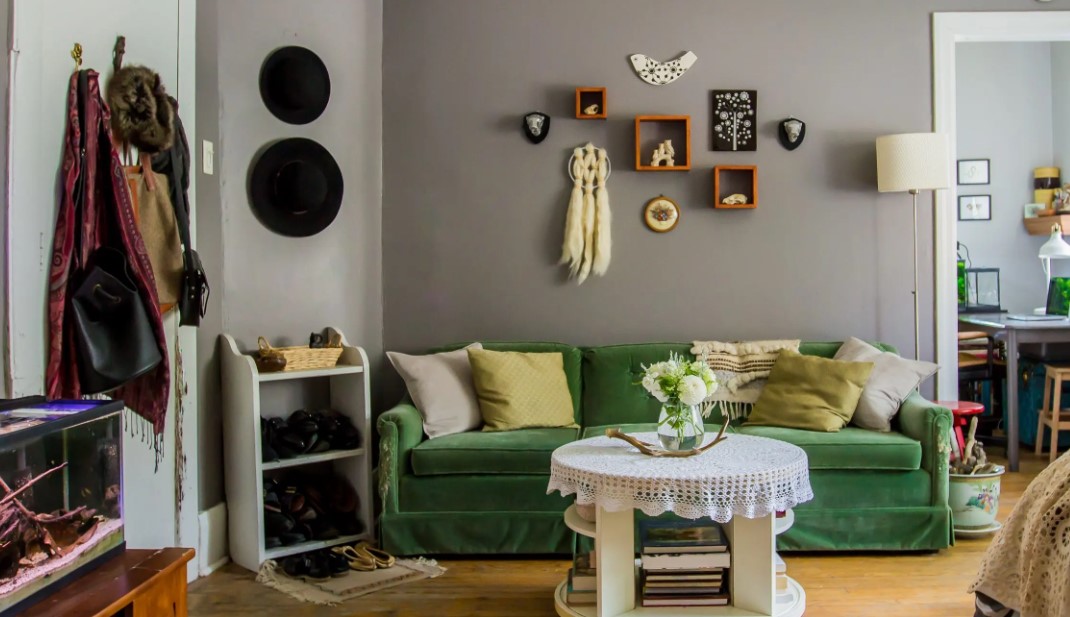Decorating small spaces can be a bit of a challenge. You want the room to feel cozy and welcoming, but not cramped or cluttered. One of the most effective ways to influence the perception of space is through the use of paint colors. The right colors can make a small room feel larger, brighter, and more open. Let’s explore the best paint color ideas for small spaces that can transform your compact areas into delightful havens.
Light and Airy Colors
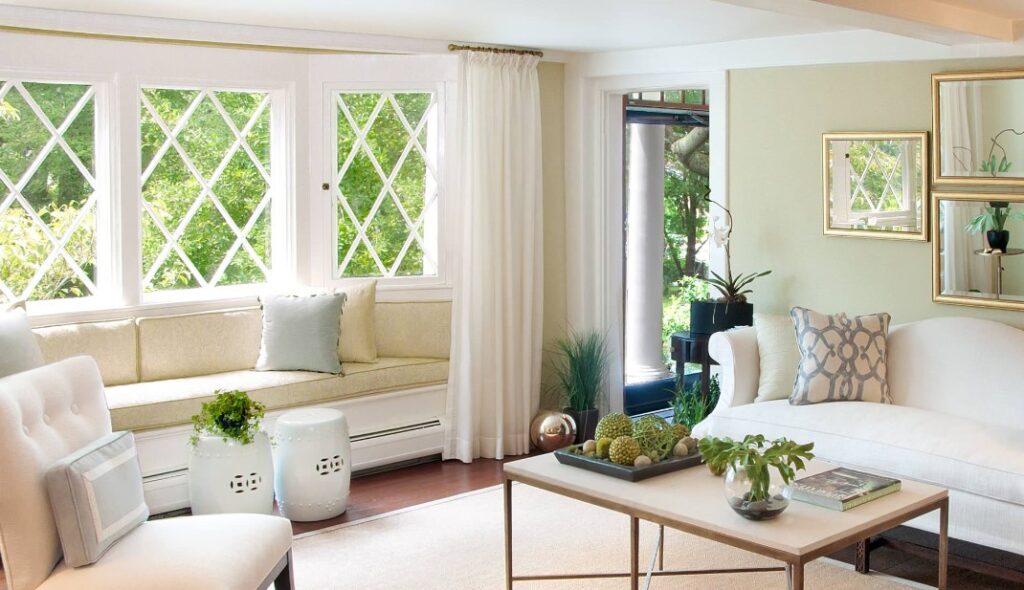
The Benefits of Light Colors in Small Spaces
Light colors are a go-to choice for small spaces because they reflect more light, making the room feel more open and airy. They can help to create a sense of space and brightness, which is essential in compact areas.
Popular Light Color Choices
- White: A classic choice known for its crispness and ability to make spaces feel larger and more open. It’s versatile and works well with any style or decor.
- Beige: A warm and neutral color that adds a sense of coziness and warmth to a room without overpowering other elements.
- Light Gray: A sophisticated and modern option that complements various color schemes. It can create a calming atmosphere while adding depth to the space.
- Soft Pastels: Colors like pale pink, light blue, mint green, and lavender are gentle and soothing. They add a touch of color without being too bold, perfect for creating a serene environment.
- Cream: Similar to white but with warmer undertones, cream is elegant and timeless. It pairs well with both light and dark accents, making it a versatile choice.
- Pale Yellow: A cheerful and uplifting color that brings warmth and brightness to a room. It’s ideal for spaces where you want to create a sunny and inviting atmosphere.
- Light Taupe: A subtle and sophisticated hue that combines the warmth of beige with the coolness of gray. It adds depth to a room while maintaining a neutral base.
- Soft Ivory: A slightly warmer alternative to white, ivory has a soft and creamy appearance. It’s perfect for creating a soft, elegant look in any room.
These light color choices can transform a space by enhancing natural light, creating a sense of openness, and setting a calm and inviting tone.
Neutral Colors
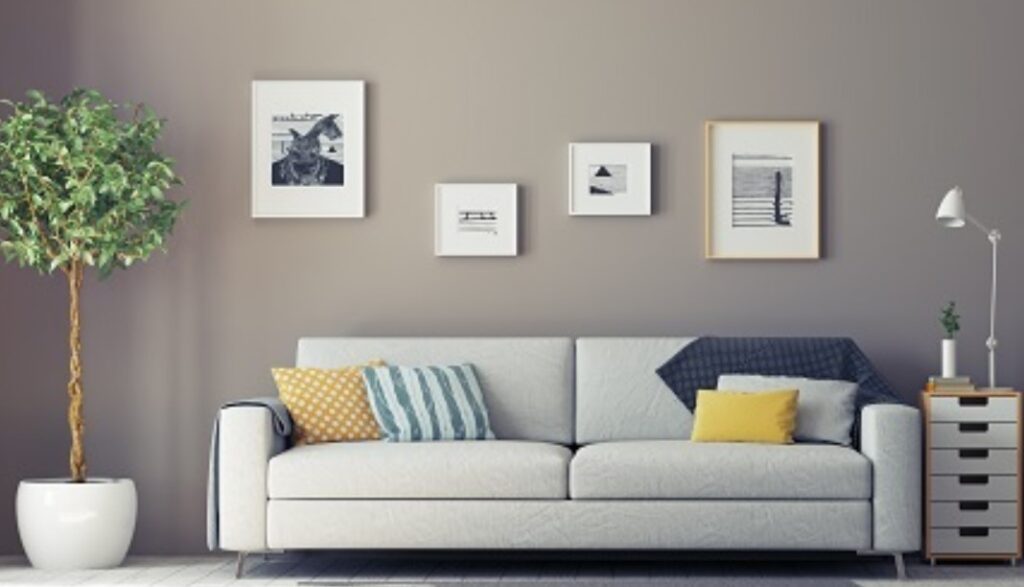
The Versatility of Neutral Tones
Neutral colors are incredibly versatile and can serve as a great backdrop for any décor style. They are perfect for small spaces because they don’t overpower the room, allowing you to play with different accents and furnishings.
Recommended Neutral Colors for Small Rooms
Choosing the right neutral colors for small rooms can help create a sense of openness and make the space feel larger and more inviting. Here are some recommended neutral colors that work well in small rooms:
- Light Gray: Light shades of gray can provide a modern and sophisticated backdrop while reflecting light to make the room feel airy and spacious.
- Soft Beige: Beige tones with warm undertones can add warmth and coziness to a small room without overwhelming the space. It creates a welcoming atmosphere.
- Pale Taupe: Taupe is a versatile neutral that combines elements of gray and brown. Pale taupe shades can create a sense of depth while still keeping the room feeling light and airy.
- Off-White: Shades like ivory or cream are timeless and can brighten up a small room. They reflect light well and create a clean and serene environment.
- Light Blue: Soft shades of light blue can evoke a sense of tranquility and spaciousness in a small room. It’s a refreshing alternative to traditional neutrals.
- Pale Green: Subtle greens like sage or mint can bring a touch of nature indoors while adding a soft and calming effect to a small space.
- Soft Gray-Blue: This hybrid color combines the calming effects of blue with the neutrality of gray. It can make a small room feel serene and sophisticated.
When choosing neutral colors for small rooms, it’s essential to consider natural light, room orientation, and the desired ambiance. Lighter shades generally work best to maximize the sense of space, while adding accents of darker or richer colors can provide depth and contrast without overwhelming the room.
Pastel Colors
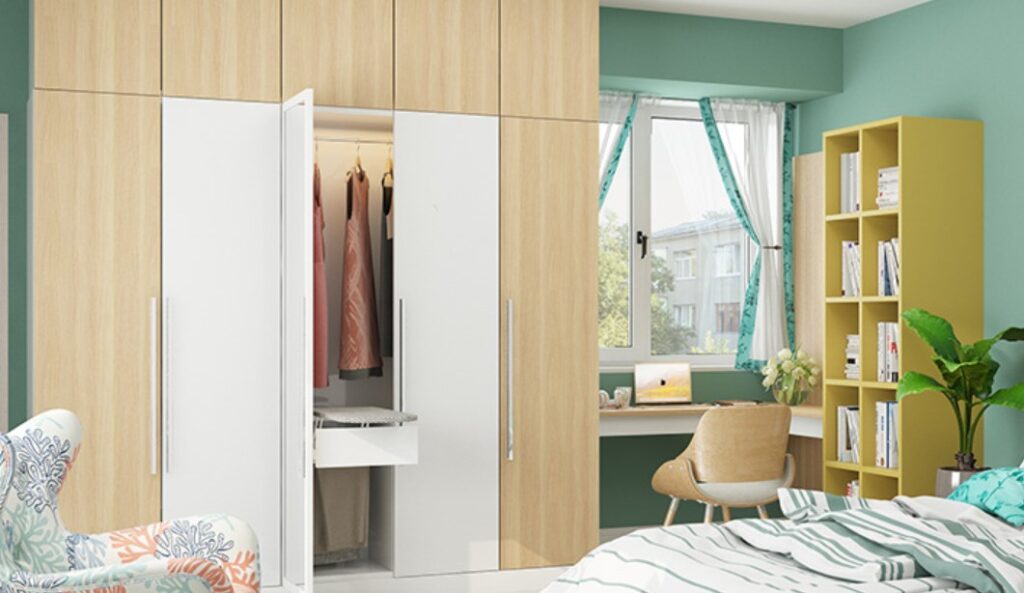
How Pastels Can Add a Soft Touch
Pastels are gentle and soothing, making them an excellent choice for small spaces. They add a hint of color without being overwhelming, creating a serene and inviting atmosphere.
Best Pastel Shades for Compact Areas
- Soft Blues: Shades like “Palladian Blue” can create a calm, tranquil environment.
- Pale Pinks: Light pinks such as “Ballet Slipper” add a delicate, feminine touch.
- Mint Greens: Fresh and airy, mint greens like “Mint Whisper” can invigorate a small room.
Bright and Bold Colors
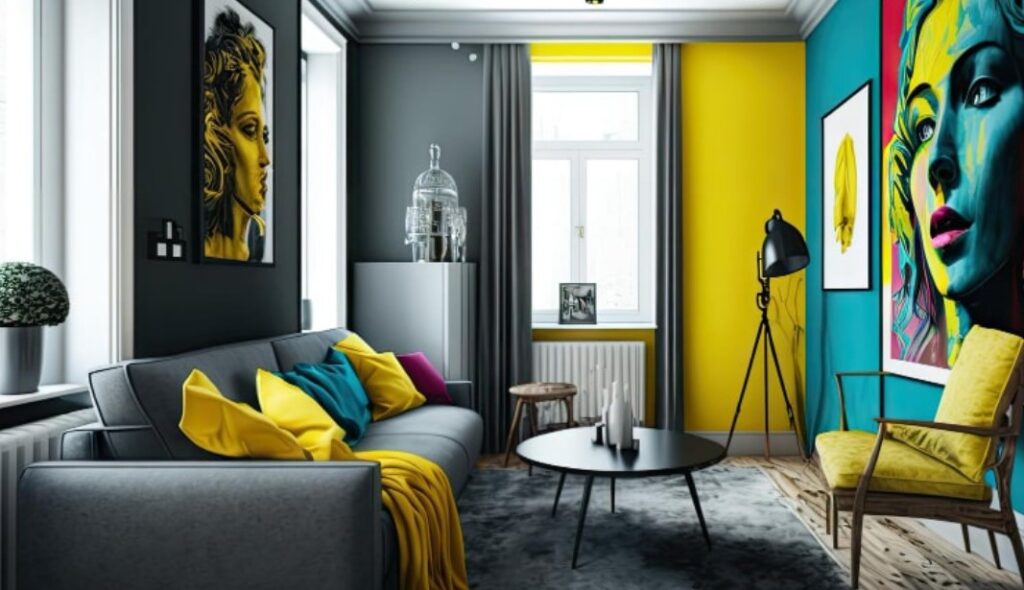
Using Bold Colors Strategically
Bold colors can be used in small spaces to create a dramatic effect. The key is to use them strategically, such as on an accent wall or in small doses, to avoid overwhelming the room.
Examples of Bright Hues That Work in Small Spaces
- Deep Blues: A rich navy like “Naval” can add depth and sophistication.
- Vibrant Yellows: Bright yellow shades like “Sunburst” can inject energy and cheerfulness.
- Bold Reds: Deep reds such as “Crimson” can create a warm and inviting focal point.
Dark Colors
Debunking Myths About Dark Colors in Small Rooms
Contrary to popular belief, dark colors can work beautifully in small spaces. They can add a sense of coziness and depth, making the room feel more intimate and sophisticated.
Successful Dark Color Applications
Using dark colors in interior design can create striking and sophisticated spaces when applied thoughtfully. Here are some successful applications of dark colors in various areas of a home:
- Accent Walls: Painting one wall in a dark color, such as charcoal gray, navy blue, or deep green, can add depth and drama to a room without overwhelming the space. It serves as a focal point and enhances the overall design scheme.
- Cabinetry: Dark-colored kitchen cabinets, like espresso or black, can create a sleek and modern look. When paired with light countertops and backsplashes, they provide contrast and make the kitchen feel stylish and sophisticated.
- Ceilings: Painting a ceiling in a dark color, such as a rich charcoal or deep blue, can create a cozy and intimate atmosphere in rooms with high ceilings. It can also visually lower the ceiling height, making the space feel more intimate and inviting.
- Trim and Molding: Using dark colors for trim, baseboards, and molding can add a sense of architectural interest and elegance to a room. Dark trim against light-colored walls creates a striking contrast and draws attention to architectural details.
- Small Spaces: Contrary to common belief, dark colors can be used effectively in small spaces to create a cozy and intimate feel. Darker hues like deep plum or chocolate brown can make small rooms feel enveloping and visually interesting.
- Bedrooms: Dark colors, such as shades of charcoal, midnight blue, or forest green, can create a serene and relaxing atmosphere in bedrooms. They can enhance the feeling of intimacy and coziness, perfect for creating a calming retreat.
- Dining Rooms: Dark colors in dining rooms, such as rich burgundy or deep eggplant, can create a sense of opulence and warmth. They provide an elegant backdrop for entertaining and dining, making the space feel inviting and sophisticated.
When using dark colors in interior design, it’s essential to balance them with lighter elements to prevent the space from feeling too heavy or closed off. Incorporating plenty of natural light, mirrors, and reflective surfaces can help maintain a sense of openness and brightness, even with darker color schemes.
Monochromatic Schemes
Creating Depth with Monochromatic Palettes
Using different shades of the same color can create depth and interest in a small space. This approach ensures a cohesive look while adding subtle variations that keep the room from feeling flat.
Tips for Choosing the Right Shades
- Start with a Base Color: Choose a light base color and then select two to three darker shades of the same hue for accents.
- Vary Textures: Use different textures to add dimension, such as matte walls with glossy trim.
- Incorporate Patterns: Subtle patterns in the same color family can add visual interest without overwhelming the space.
Accent Walls
The Role of Accent Walls in Small Spaces
Accent walls can create a focal point in a small room, adding depth and visual interest without overwhelming the space. They can also help to define different areas within an open-plan layout.
Best Colors for Accent Walls in Compact Rooms
- Bold Blues: Shades like “Hale Navy” can create a stunning focal point.
- Rich Reds: Deep reds such as “Red Pepper” can add warmth and energy.
- Dark Greens: Colors like “Forest Green” can bring a touch of nature indoors.
Ceiling Colors
Impact of Ceiling Color on Room Perception
The color of your ceiling can significantly impact how large or small a room feels. A lighter ceiling can make a room feel taller and more open, while a darker ceiling can create a cozier, more intimate atmosphere.
Creative Ceiling Color Ideas
- Light Blue: A soft blue like “Sky Blue” can make a ceiling feel higher.
- White: A classic white ceiling is always a safe bet to keep things airy.
- Bold Hues: For a dramatic effect, consider a bold color like “Indigo” on the ceiling to draw the eye upward.
Color Combinations
Harmonizing Multiple Colors in a Small Space
Combining colors can add personality and interest to a small room. The key is to choose colors that complement each other and maintain a balance.
Effective Color Pairings
- Blue and White: This classic combination can create a crisp, clean look.
- Gray and Yellow: Soft grays with vibrant yellows can add a modern touch.
- Green and Beige: Earthy greens paired with neutral beiges can create a calming, natural atmosphere.
Using White Strategically
The Power of White in Small Spaces
White can be incredibly powerful in small spaces, reflecting light and creating a sense of openness. It also serves as a blank canvas, allowing you to add colorful accents as you wish.
Best White Shades and Finishes
- Crisp Whites: Shades like “Decorator’s White” offer a clean, modern look.
- Warm Whites: Soft whites such as “Swiss Coffee” can add warmth and coziness.
- Glossy Finishes: Glossy white finishes can enhance light reflection and make the room feel larger.
Warm Colors
Creating a Cozy Atmosphere with Warm Tones
Warm colors can make a small space feel inviting and cozy. They can add a sense of comfort and intimacy, making the room feel like a welcoming retreat.
Recommended Warm Colors for Small Rooms
- Soft Yellows: Shades like “Buttercream” can add a cheerful touch.
- Warm Oranges: Colors such as “Apricot” can create a warm, inviting vibe.
- Rich Browns: Deep browns like “Chocolate” can add depth and warmth.
Cool Colors
Expanding Space with Cool Tones
Cool colors can help to expand the perception of space in a small room. They tend to recede, making the walls feel farther apart and the room more open.
Best Cool Shades for Compact Areas
- Light Blues: Shades like “Ice Blue” can create a serene, spacious feel.
- Soft Greens: Minty greens such as “Seafoam” can add a refreshing touch.
- Cool Grays: Light grays like “Sterling” can create a modern, airy atmosphere.
Reflective and Glossy Finishes
Enhancing Light with Reflective Finishes
Reflective finishes can amplify natural and artificial light, making a small space feel brighter and larger. Glossy and semi-gloss paints are particularly effective in this regard.
Recommended Glossy Colors
- Glossy Whites: High-gloss white can maximize light reflection.
- Shimmering Silvers: Metallic silvers like “Silver Plate” can add a modern touch.
- Pearlescent Tones: Pearlescent finishes can add a subtle shimmer and enhance light.
Choosing the right paint colors for small spaces can dramatically transform how a room feels and looks. From light and airy hues to bold and dark tones, the possibilities are endless. The key is to experiment with different colors and finishes to find what works best for your personal style and the specific characteristics of your space. Remember, a small space doesn’t have to feel cramped or limited; with the right color choices, it can become a stylish and inviting haven.
